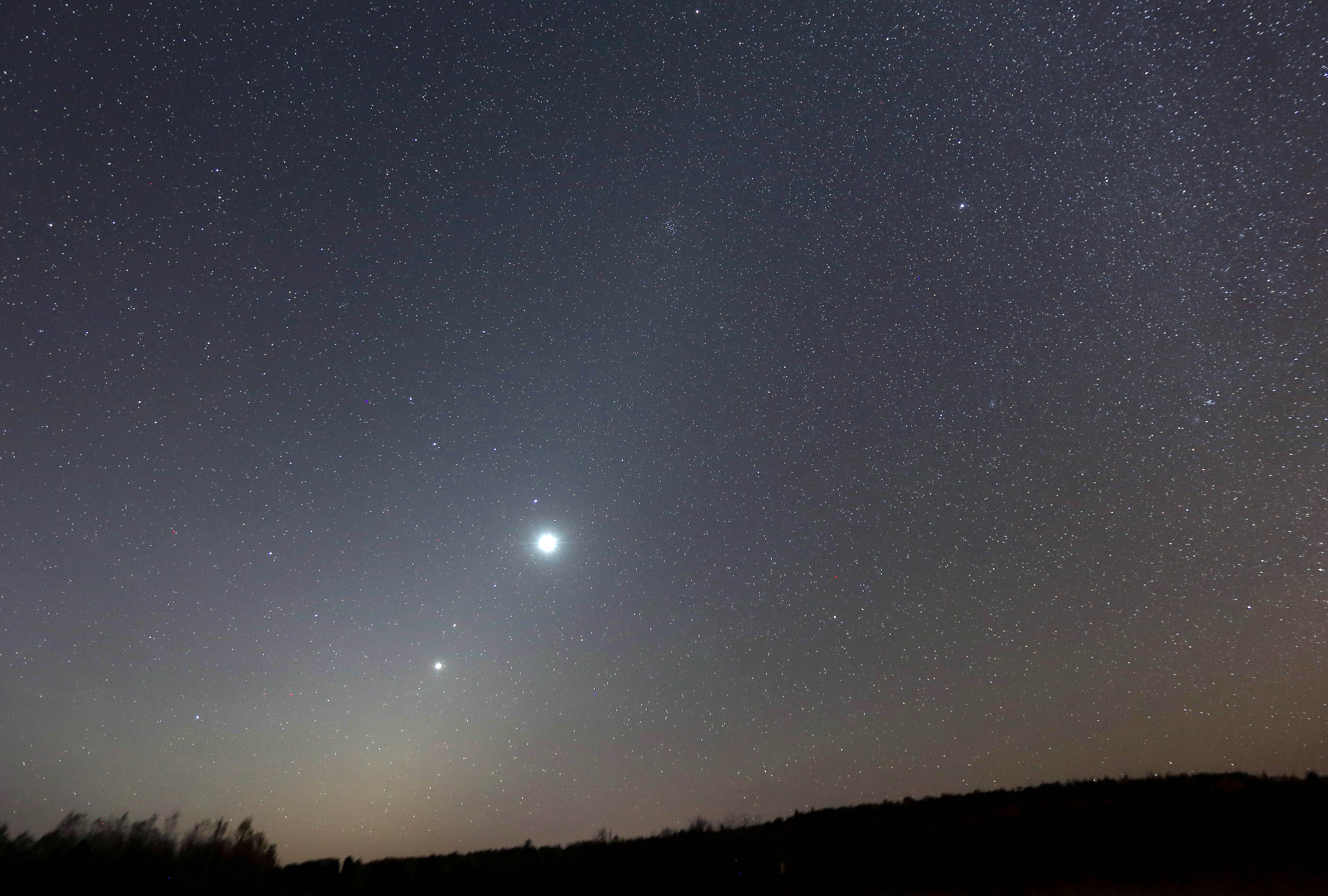
Cosmic Relief with David Grinspoon
No Need to Feel Lonely
Are we alone in the universe? Recent results don't support that conclusion, despite what the headlines say.

China Launches Dark Matter Probe
China's recently launched Dark Matter Particle Explorer (DAMPE) takes the hunt for elusive dark matter to space.

Explore the Night with Bob King
Run Away With These Runaway Stars
Three stars that once belonged to Orion flew the coop millions of years ago, but you can catch up with them with binoculars the next clear night.

Tale of Capella and the Two Red Dwarfs
Bright Capella plays it close to the vest when it comes to companions, but with a good map and steady skies you can track down its dwarf binary.

Japan’s Akatsuki Reaches Venus . . . At Last
Engineers executed an innovative contingency plan to save the Akatsuki spacecraft and place it in orbit around our sister planet.

LISA Pathfinder Heads to Space
An exciting new mission takes the hunt for gravitational waves into space.

Explore the Night with Bob King
Moon Occults Venus on December 7th
After taking us to Comet Catalina's doorstep, the Moon covers Venus in a spectacular daytime occultation visible from most of North and Central America on Monday, December 7, 2015.

Explore the Night with Bob King
Moon Illusion is All in Your Head
Is perception reality? Not when it comes to the Moon illusion. See the truth with your own eyes at the rising of the next full Moon.

Explore the Night with Bob King
Watch a Black Hole Eat Dinner
S5 0716+71, a bright blazar currently in a feeding frenzy, invites you over for dinner the next clear night.

Astronomy in Space with David Dickinson
Unique Scope Searches for Space Junk
NASA's new remote observatory located on a windswept island in the mid-Atlantic provides a critical capability for tracking space junk.

Catalina Comet Sails Into Northern Skies
Comet Catalina returns this month with naked-eye potential. Follow its every move with our guide and maps.

Explore the Night with Bob King
Triple Treasure in Triangulum's Pinwheel
Travel 2.7 million light-years from home to the Pinwheel Galaxy, where we'll visit a supergiant star, an extragalactic globular cluster, and one of the largest nebulae in the known universe.

Mystery Object to Reenter Earth's Atmosphere
WT1190F will burn up over the Indian Ocean on November 13th, giving researchers an unprecedented opportunity to follow its path — and figure out where it came from.

Explore the Night with Bob King
How to See Lunar Craters with the Naked Eye
Who says you need a telescope to see craters on the Moon? Here's how to find a half-dozen with just the naked eye.

Astronomy in Space with David Dickinson
DSCOVRing Earth
An innovative Earth-observing satellite now shows near-daily views of our home planet online.

The Night of the Blazing Aurora
A group of about 40 intrepid souls from the U.S. and Australia hits pay dirt on a tour of Iceland

Explore the Night with Bob King
Discover a Dozen Clusters in the "W"
Open your bag wide as we go trick-or-treating in the "W" of Cassiopeia, home to more than 100 star clusters.

Explore the Night with Bob King
Take the Gegenschein Challenge
How and when to see the gegenschein, cousin of the zodiacal light and one of the greatest night sky naked-eye challenges.

Explore the Night with Bob King
"Blink" a Nova Tonight
Like people doing good imitations, novae often mimic planetary nebulae. Read on to learn how to watch the evolution of these tricksters using a common nebula filter.

Astronomy in Space with David Dickinson
India Launches First Astronomy Satellite
AstroSat launched into orbit on September 28, 2015, and will soon start returning visible, ultraviolet, and X-ray images of the universe.
